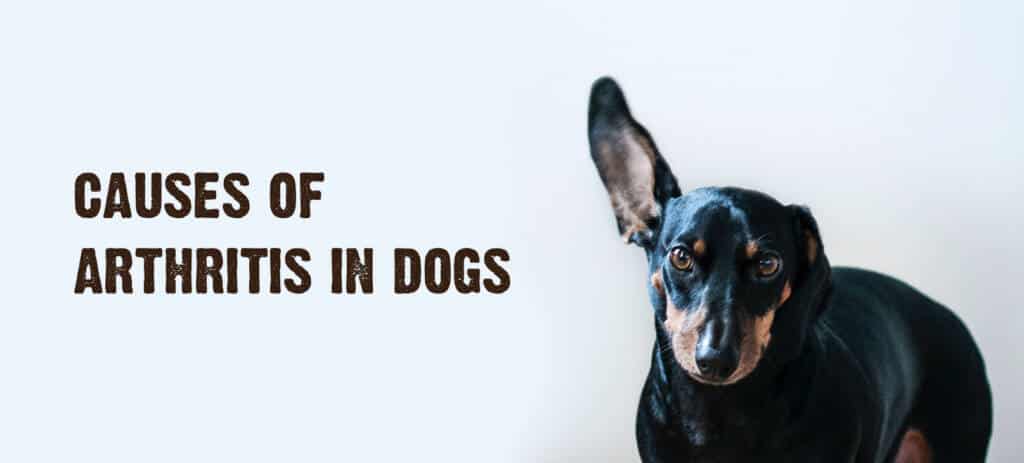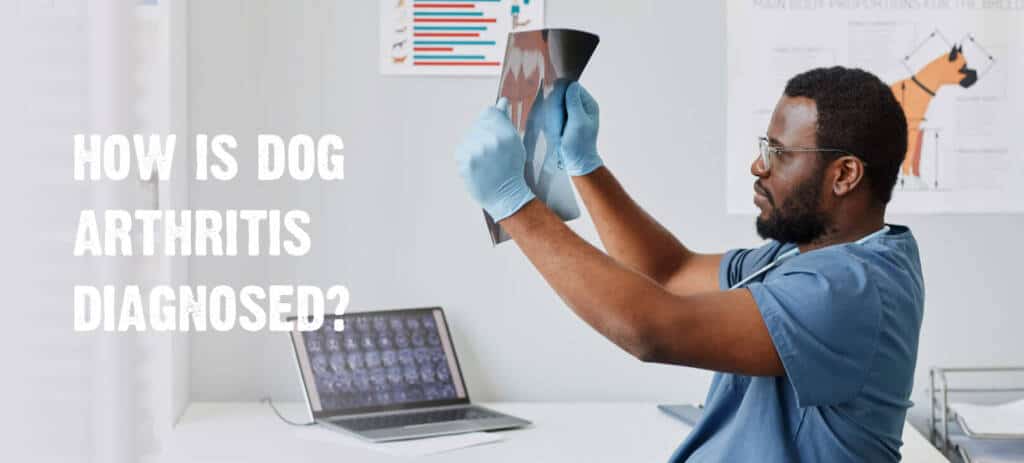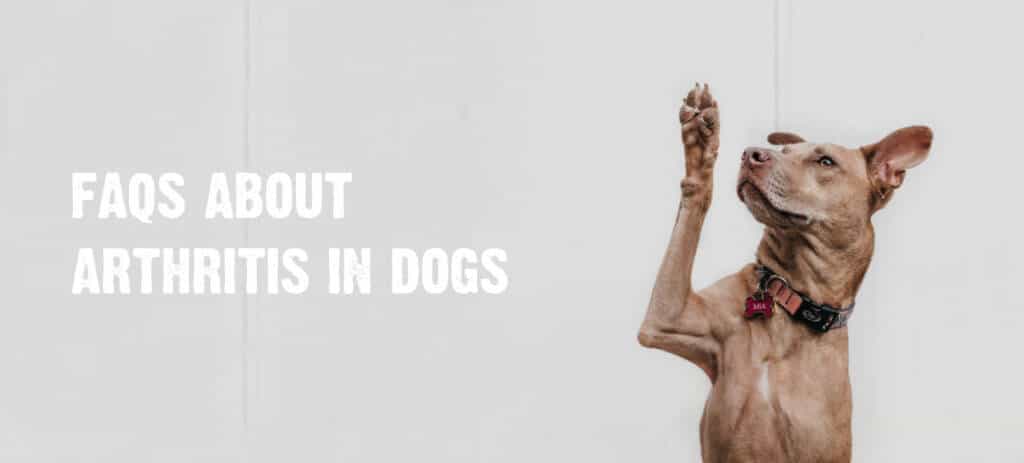Do you ever feel like your dog just knows when you don’t feel well? Maybe your pup won’t leave your side, is being extra cuddly on the couch or uncharacteristically becomes a lap dog when your stress levels are high. Many dog parents can recall a time when their pet “nursed” them on sick days or acted like their shadow when they didn’t feel great.
So what about when the roles are reversed? Are you always able to tell when your pet is sick or in pain? Cases of canine arthritis may be one of those instances in which you’re not quite sure what your pet is experiencing. In this article, we explore the causes, symptoms and treatments for arthritis in dogs.
What Is Dog Arthritis?
Arthritis is a condition of the joints that affects a significant number of domestic dogs at some point during their lifespan, often causing pain or discomfort and impeding a dog’s ability to walk easily.
Canine arthritis or osteoarthritis is a degenerative joint condition in which the cushion of cartilage between bones wears down, decreasing healthy joint mobility. Unfortunately, this is a relatively widespread condition affecting one in every three pet dogs.
Causes of Arthritis in Dogs
As the leading cause of chronic pain in dogs, it’s important that dog owners know how arthritis develops so they can help prevent it and ensure a good quality of life. Because there is no cure for arthritis in dogs, simple preventative measures can make a big difference in the long term.
The most common cause of arthritis in dogs is excess wear and tear on the joints. This can be exacerbated by congenital abnormal bone development (hip, elbow or shoulder dysplasia) or a tear in their cranial cruciate ligament, what humans would call their ACL. Either of these conditions can lead to osteoarthritis or degenerative joint disease (DJD), which worsens as a dog ages.
7 Symptoms & Signs of Arthritis in Dogs
The following are the most frequently observed signs of osteoarthritis in dogs:
- Difficulty moving: This mostly presents as hesitation before routine movements — jumping into the car, climbing the stairs, getting up onto furniture, etc. Hesitation can be a clue that a dog is already uncomfortable and may be anticipating a spike in pain when they make a big movement.
- Biting, licking and chewing: Since they can’t communicate with words, dogs will often signal discomfort by biting, licking or chewing on the affected area. This can further lead to inflamed skin or hair loss.
- Spinal issues: Although most commonly observed in leg joints, arthritic symptoms can flare up in a dog’s spine as well. The most common signs are a stiff neck or limited range of motion, hunched or otherwise changed posture or lameness in one or both back legs .Spinal issues, such as stiff neck & limited range of motion may be hard to detect It is important for pet parents to be observant of these changes and to address the discomfort their pets are experiencing quickly before agitation, irritability and lethargy set in.
- Fatigue: Pets experiencing pain can tire easily. A dog with arthritis may be less eager for walks, less interested in play or even struggle to rise from lying down.
- Limping: This symptom can present as a pronounced limp in one back leg or simply increased caution when walking around. Limping may subside once the dog “warms up” through movement.
- Irritability: Just like humans, it’s common for a pet in pain to display uncharacteristic irritability, particularly when being handled or pet, sometimes even snapping or biting.
- Muscle atrophy: Dogs with arthritis will tend to favor the unaffected or less sensitive side (particularly the legs) when moving around. Over time, the unequal weight distribution can result in loss of muscle tone and strength in the less-used limb.
Interestingly, the signs and symptoms of arthritis are similar for both dogs and cats. If you notice your cat exhibiting any of these signs, you’ll know what the likely culprit is.
How Is Dog Arthritis Diagnosed?
While you may be able to deduce that your dog is developing arthritis by observing common symptoms, your dog’s veterinarian will be able examine your dog and give a formal diagnosis.
X-rays are commonly used to determine the severity or progression of the disease. A veterinarian may also factor your dog’s age and medical history into their prognosis and treatment recommendations.
Treating Arthritis in Dogs
Although arthritis cannot be cured, and ligament damage may require surgery, some non-invasive methods have proven effective for pain reduction:
- Orthopedic bracing: Wearable braces wrap around a dog’s affected joints to improve their stability and limit their range of motion to prevent further injury. Most frequently, braces provide support for arthritis flare-ups in the hips, knees or wrists.
- Acupuncture: Dogs can respond well to acupuncture, a traditional Chinese medical technique in which a series of small needles are placed just beneath the surface of the skin to mitigate pain and stress.
- Cold laser therapy: Photobiostimulation is a non-invasive treatment that uses focused light to stimulate blood flow and encourage cell growth, leading to reduced inflammation and less pain in the joints.
- Vitamins and supplements: There are several vitamins that support bone and joint health in dogs and can potentially prevent arthritis. These include vitamin D, omega-3 fatty acids (both found in fish oil) and CBD oil. Pet owners should ask their vet about using injectable Adequan as one option to help relieve the inflammation and discomfort.
How to Help Manage Your Dog’s Arthritis Pain
Many dog parents choose non-pharmacological options like acupuncture, reiki, aquatic therapy and bracing to manage their dog’s arthritis pain and avoid having to rely on medication. CBD oil has also become increasingly popular for canine pain and anxiety management in recent years, and is available in tinctures, treats, topical ointments and even shampoos.
However, following a consultation, a veterinarian may determine that prescription pain medication is the best option for your dog’s arthritis symptoms. Most often, a vet will prescribe a non-steroidal anti-inflammatory drug (NSAID) and advise you on proper dosage and administration. It’s important to note that, while common NSAIDs like naproxen or ibuprofen are often used to treat pain in people, both are highly toxic to dogs and should never be administered.
3 Factors to Maintain Good Joint Health
If you have a dog with healthy joints, the key to preventing arthritis is to help them maintain joint health. Each of the following preventative measures can help dogs stay generally healthy and avoid developing arthritis:
- Clean diet: Dogs with a carbohydrate-heavy diet tend to gain weight faster than dogs on a raw or low-carb diet. Since extra weight can exacerbate the progression of arthritis, it’s important to feed your dog a diet full of nutrient-rich, minimally processed, all-natural ingredients.
- Regular exercise: Similarly, exercising regularly can help dogs keep off extra weight. Physical exercise is also important in helping dogs retain their joints’ full range of motion.
- Regular care and check-ups: Maintaining regular veterinarian appointments is vital to all pets’ health. Dr. Laurel of Sunvet Animal Wellness recommends one appointment per year for adult dogs (age 1 year and up) and twice a year for senior dogs over age 10.
- Supplementation: Glucosamine, chondroitin, MSM, Trixsyn and Omega-3 oils supplements support joint cartilage, which provides a cushion between bones and enables smooth movements.
FAQs About Arthritis in Dogs
What is the best way to feed my arthritic dog?
While no specific diet will cure arthritis or completely remove pain from your dog’s life, nutrition can play an important role in supporting an arthritic dog’s health. Studies have shown that a 10–20% drop in a dog’s weight can significantly improve their arthritis symptoms. With this in mind, it is important to monitor your dog’s fat and carbohydrate intake, since too much of either can lead to weight gain. Read pet food labels to be sure you’re feeding your dog ingredients that support optimal health.
Can dogs with arthritis eat grains?
Anecdotally, many dog owners see noticeable improvements in arthritis symptoms when they eliminate grain from their dog’s diet. Carbohydrates in grains can trigger inflammation and contribute to weight gain. If obesity is a concern, try avoiding food with ingredients such as wheat, corn, rice or barley. Many dog treats are also sources of surplus carbohydrates, since many are grain-based and heavily processed. Watch to see if certain foods trigger arthritis symptoms or other adverse side effects, as this could also signal food allergies.














